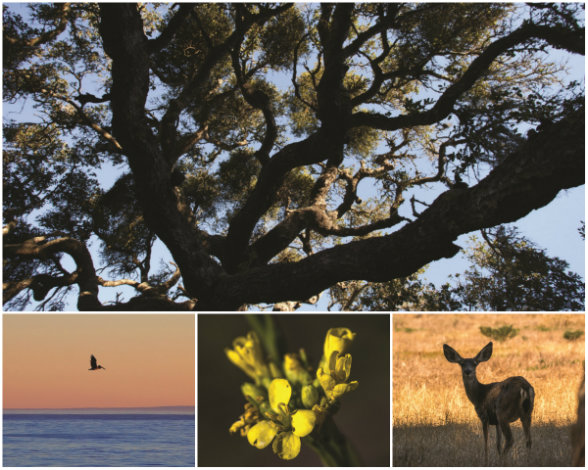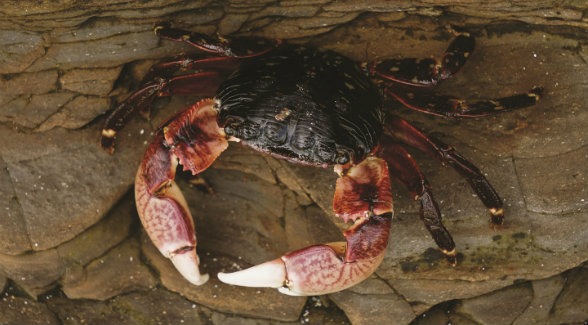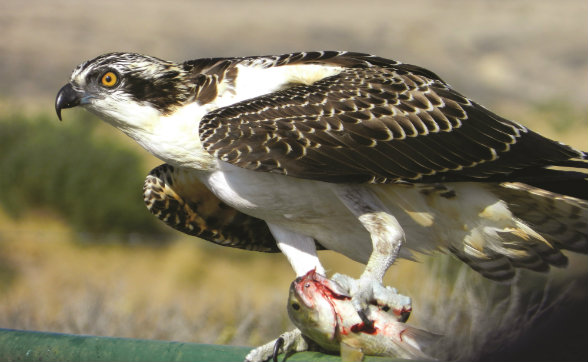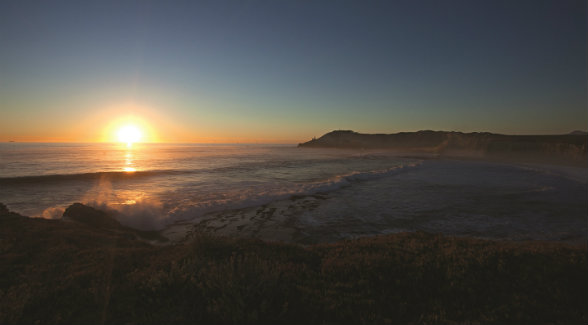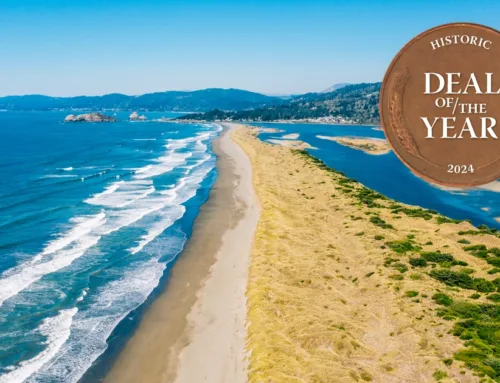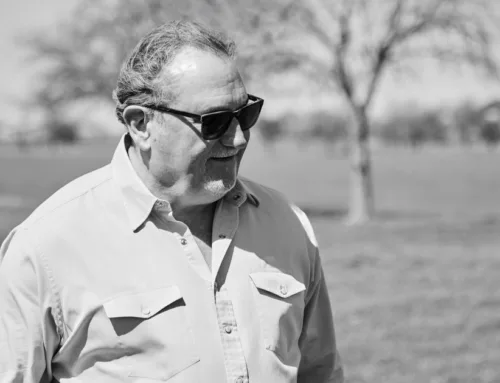2017 Deal of the Year
2017 Deal of the Year
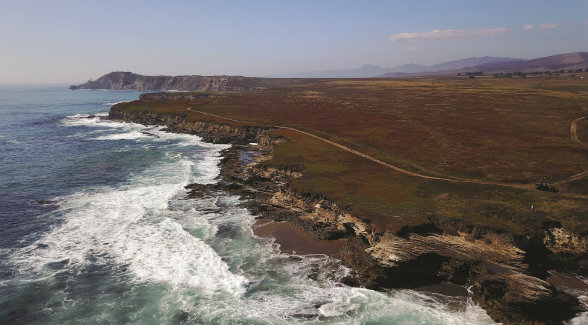
Dangermond01_lg
Site of one of the first lighthouses in California, the headland of Point Conception marks the junction of Northern and Southern California.
A $165 million gift, the largest in Nature Conservancy history, transforms a renowned California rancho from a lucrative development site into a unique haven.
Text by James Fallows | Photography courtesy of The Nature Conservancy
Good news for the environment comes from California today, and from a part of the state very near the hillsides that have suffered the economic and environmental devastation of the recent wildfires. A renowned tract of undeveloped California coastal land totaling more than 24,000 acres, or about 38 square miles, has been purchased by The Nature Conservancy (TNC) for permanent preservation, thanks to a $165 million donation by a wealthy tech-industry couple. The donation, the largest single gift TNC has ever received, is significant in its immediate effects, and it has the potential to matter even more through the longer-term example it aspires to set.
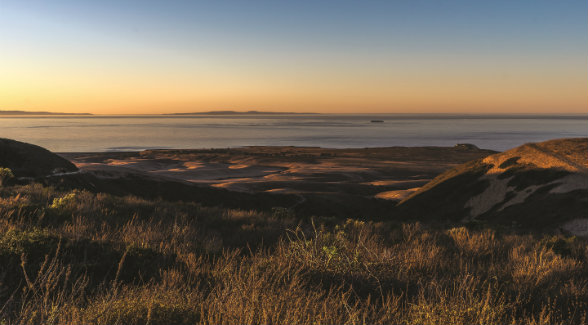
Fifty years ago, Jack and Laura Dangermond car camped during their honeymoon on the very land they would donate to The Nature Conservancy.
The tract includes hills and canyons, grasslands and brush, 2,000 acres of coastal live-oak stands containing perhaps 1 million trees, a creek, parts of the Santa Ynez Mountains – and a full eight miles of the bluffs and beaches that make up the coastline around Point Conception, west of Santa Barbara. The benefactors are Jack and Laura Dangermond, who founded and still run the Esri mapping company in the small southern California town of Redlands where they both grew up. (For the record: I have known the Dangermonds for many years, having grown up in the same town at about the same time.)
The tract will be called the Jack and Laura Dangermond Preserve. It has been informally known as the Bixby Ranch, after the family that owned it and a lot more of Southern California starting in the late 1800s. (More recently the land has been known as the Cojo and Jalama ranches.) Cattle have grazed here since the ranch’s founding, but the land still very much has the look and the ecological characteristics of the wild. Crucially, it has never been subdivided, converted to malls or mansions, or otherwise commercially developed. With today’s announcement, it never will be – a different outcome than many conservationists feared over the past decade, when the land was owned by a Boston fund that has specialized in coastal-development projects.
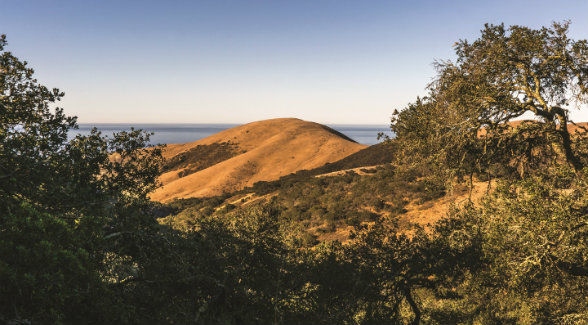
The rugged terrain includes more than 2,000 acres of coastal live-oak stands containing an estimated 1 million trees.
The TNC representatives I spoke with about this nature preserve, along with Jack Dangermond himself, were careful to say nothing whatsoever about these previous owners. But the group’s identity and track record are easy to figure out from online sources. When it bought the ranch for some $136 million 10 years ago, just before the worldwide financial and real-estate crash, its lawyer gave a non-denial denial to local citizens concerned about commercial development. Under terms of the sale, the land could have been broken into more than 100 parcels. But according to Ethan Stewart of the Santa Barbara Independent, the hedge fund’s lawyer said everyone should calm down. After all, he said, his clients “absolutely do not have any specific plans yet for the land.” In the financial and regulatory conditions of the decade that followed, it turned out that they were not able to pursue any.
Point Conception is evident on a map as the place where the California coast takes a 90-degree turn. On one side of it, stretching toward Santa Barbara and Ventura and beyond them to Los Angeles, the coast runs nearly east-west. On the other side, heading up toward Monterey and San Francisco, the coast runs mainly north-south. (Immediately north and west of the Dangermond Preserve is Vandenberg Air Force Base, which is still in active use as a launching site for rockets and missiles.) The headland of Point Conception juts out into the Pacific at the corner where the coast makes its turn, with one of the earliest lighthouses built along the California coast.
“There’s no place like it on this Earth,” a county supervisor named Joni Gray told Ann Herold and Dan Harder of the Los Angeles Times 10 years ago, after the hedge-fund sale. “It’s more beautiful than Yosemite or Yellowstone.”
Another man who had grown up in the region told Herold and Harder, “The footprint of man is very light out here. It’s where you understand what California was all about before people ruined it.”
Before the arrival of the Spanish and then the Americans, this was the land of the Chumash people, who considered the point a portal through which spirits entered the next world. Point Conception’s positioning has long made it perilous for mariners – and precious to scientists and naturalists. “I like to say it’s where Northern California and Southern California meet,” Michael Sweeney, executive director of The Nature Conservancy in California, told me. “That is why it is a zone of such ecological diversity. You have plants and animals you’d expect to find in the north, along with those you’d expect to find in the south. It is uniquely diverse.”
The melting-pot aspect extends even to the waters off the point. “On the marine side, it is one of the most valuable places on the California coast, because it’s where the cold currents coming down from the north meet the warm currents from the south,” Jack Dangermond told me in a phone interview. “With this huge mixing, you have a rookery of seals, big whales, all the elements of a hugely diverse marine resource.” A California state marine reserve, established over the past decade, protects fish, sea mammals, and other wildlife in a 22-square-mile area of the waters off Point Conception. “From the seafloor to the ridgetops you have a big protected area, and that is pretty special in the world,” Sweeney said.
“This is a conservation project of historic significance,” Henry Yang, the chancellor of the University of California at Santa Barbara, told me via email when I asked him about the new preserve. As part of this project, the Dangermonds are also establishing a $1 million endowed Chair in Conservation Studies at UCSB. “The area is recognized globally for its rich biological diversity and ecological significance,” Yang said. “As a transition zone from warmer southern species to cooler northern species both on land and in the coastal ocean, it provides a unique place to study and learn how climate affects the ecosystem.”
“Laura and I … became deeply attached to this land a long time ago,” Jack Dangermond said in an all-hands message to the several thousand Esri employees in announcing the purchase. Fifty years earlier, on the Dangermonds’ honeymoon in the late 1960s, they’d driven along the coast in a little car and camped at night in a pup tent.
“We were just kids, and that was our first connection to realizing it was a special place,” Jack told me.
The Dangermonds’ gift is significant in two ways, the immediate and the longer term. The first effect is what it does directly to preserve habitat. The simple fact is that without this move, sooner or later this ecologically, aesthetically, and even spiritually important land would have been bulldozed away. Now that will not occur.
Jack Dangermond told me that his friend E.O. Wilson, the famed biologist, had advanced the idea that “we are innately all ‘biophiliacs’” – that people are drawn to nature even in unconscious ways. “It’s why people keep a little philodendron in their apartment, or have an aquarium, or dogs. People want to feel some connection to nature and the natural living world.” The innate importance of preserving parts of the natural matched the Dangermonds’ own sensibility. Jack grew up in a gardening culture – his father, an immigrant from Holland, was a gardener and ran a small nursery business, and Jack’s original training was in landscape architecture – and he and Laura have made the property around their modest home essentially one big arboretum. But they argue that preservation has a larger consequence.
“These natural areas, particularly pristine and intact areas like this one, are so very important, and they are disappearing like crazy,” Jack told me. The Dangermonds’ Esri company specializes in mapping software that, among other functions, allows long-term analysis of geographical trends.
“We did a study with Clark University forecasting out 50 years and making maps with our software about natural areas in that time. And in 50 years, the areas that remain will become very fragmented. If any normal person would see that, they would get very disturbed, but the process is well underway. These models make it clear that the fundamental fabric of nature is being altered, and these areas are going to disappear.”
Thus the urgency, he argued, of “grabbing places like this and putting them into conservation, while you still can.” The vistas of Point Conception may not have the same iconic impact as the Grand Canyon or Yosemite, he said. “But ecologically it is just as important” – because of the diversity of flora and fauna, because of its nearly unspoiled aspect. “We have the splendor of the national parks because they were set aside 100 years ago in a park system. It gives me a kind of solace to think that more of these areas will be protected.”
Beyond solace, the Dangermonds hope that UCSB and The Nature Conservancy will together make Point Conception a unique digital-research center for the identification and protection of similarly important and endangered ecological hot spots around the world. They’ll have help from Esri’s software, which they believe will allow them to measure and analyze trends, good and bad, more extensively than in any comparable site.
“This really is a pivotal point to be envisaging how new technologies might be employed to gather the data in support of research,” Chancellor Yang wrote to me. “Many new Earth-observing satellites have been launched in recent years, with the ability to scan the surface more frequently and in more detail. We have a wide range of sensors that can be installed on, below, and above the land surface; we have new computer models that can take these data inputs and process them to make accurate predictions of the impacts of conservation strategies.”

Since their Esri company is still privately held, the precise extent of the
Dangermonds’ wealth is also private. Jack told me that published estimates, in the low to mid billions, are “exaggerated.” Whatever the details, they are people of means. But their previous gifts have been unpublicized and often anonymous. Their names don’t appear at all, or only in fine print, at many of the local institutions they support.
In contrast, this tract of land will be the Jack and Laura Dangermond Preserve, and the professor at UCSB will hold the Jack and Laura Dangermond Chair. Why?
“We’re very intentionally setting out a model that we hope other people with money will follow,” Jack Dangermond said. “We’d like people to think, ‘Let’s do what the Dangermonds did.’ We’d like them to copy us.”
“There are lots of wealthy people in the tech industry in California and elsewhere,” he said. “America’s wealthy people are flush with money. They’re wondering where to put it”– and the favored emphases of this era’s tech leaders include education and public health. “Those are great! But we haven’t yet seen that kind of commitment to nonpolitical conservation issues.” He gave the example of the Rockefellers, who preserved land in New York, in Maine, in Wyoming, in many other places that eventually adjoined or became part of national or state parks.
He is aware of the complications of this private-philanthropy model for conservation: the baronial overtones, the theoretical superiority of having the government take the lead with truly national parks, like the Grand Canyon or Yellowstone. But to put it mildly, that’s not what the federal government is doing these days. In the weeks before the Point Conception announcement, Donald Trump ordered the Bears Ears and Grand Staircase—Escalante national monuments reduced in size. When I asked Michael Sweeney why the state or the federal government hadn’t bought the ranch long ago – including through the defense budget, since Vandenberg Air Force Base is next door – he said, “Because it just would never happen. The price is an obstacle. There are too many agencies to coordinate.”
Jack Dangermond makes a more positive case. “If you look back historically, the national parks were of course a public undertaking. But families like the Rockefellers played a direct or indirect part for many years. America has a long history of private philanthropy for public causes that sometimes gets overlooked.”
Much as the Rockefellers’ example is remembered now – or Carnegie’s with his libraries, or the Mellons’ and Fricks’ with their museums – the Dangermonds hope that in their smaller-scale way they can set an example others can refer to. “We would love to have 100 Dangermond Reserves,” he said. “But I’m not Carnegie. We’re not in the oil business. We can’t do this by ourselves. We’re telling the story to set an example of what others could do.”
Examples set by people of wealth and influence can have their ripple effects through society. Andrew Carnegie established some 2,500 libraries largely with his own money, but ultimately their success and survival depended on support from the communities where they were built. Indeed, Carnegie conditioned his grants on guarantees of long-term local taxpayer support for each library, because otherwise “the public ceases to take interest in it, or, rather, never acquires interest in it.” Jack Dangermond said that, beyond its potential effect on other rich families, the new preserve would encourage citizens more generally to look at conservation projects in their own neighborhoods. “People could buy a vacant lot and turn it from ‘gray infrastructure’ to ‘green infrastructure,’” he told me. “As cars become automated, a lot of parking-lot space will open up, and people in neighborhoods can collectively or individually create parks and make cities more livable.”
Will individuals and families make the connection between this large act of philanthropy and the smaller-scale opportunities immediately around them? It’s a lot to expect. But even if the impact of today’s news were, despite the donors’ aspirations, confined to one evocative tract along the California coast, the announcement would be a significant one. It is a gift to the planet and to the future – a dramatically positive move from people with wealth when there’s been so much movement the opposite way.
© 2017 The Atlantic Media Co., as first published in The Atlantic Magazine. All rights reserved. Distributed by Tribune Content Agency LLC.


